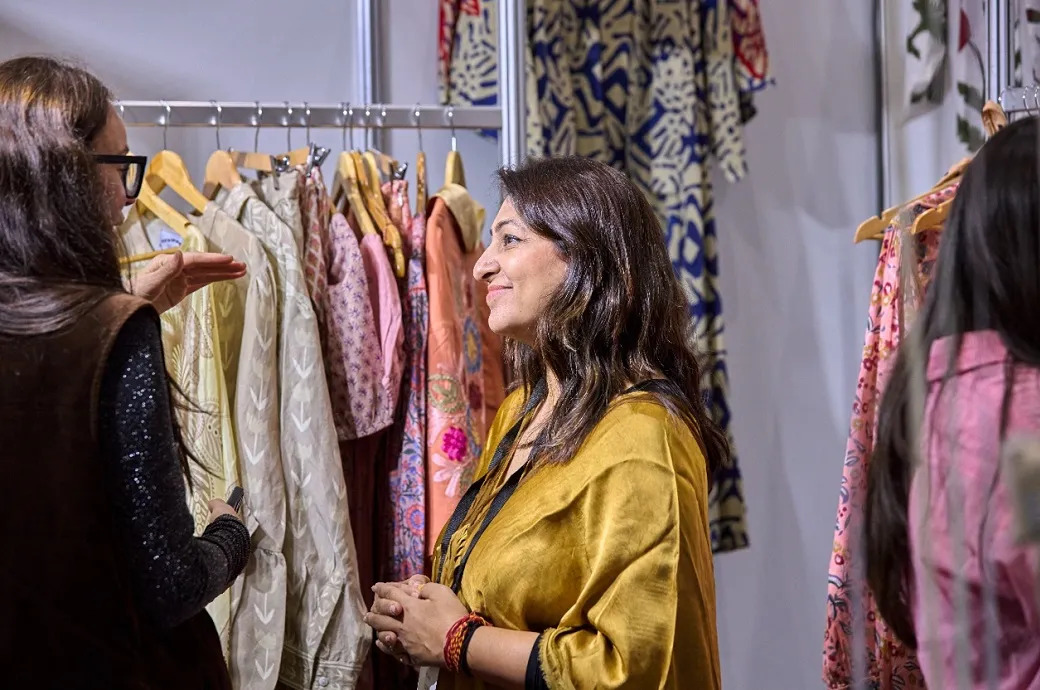
The fashion industry has long touted secondhand shopping as a silver bullet for sustainability, a movement that redefines style through reuse, reduces waste, and curbs overproduction. But a new US study, ‘Secondhand Fashion: Solution or New Illusion?’ by researchers Meital Peleg Mizrachi, Ph.D., and Ori Sharon, upends that comforting narrative. Its conclusion is as counterintuitive as it is unsettling: the booming resale market may not be mitigating fashion’s excess it may be accelerating it.
A circular dream with linear habits
The research, based on a survey of 1,009 respondents, paints a nuanced portrait of modern consumption. It reveals that the very consumers driving the secondhand boom are also leading to the growth of new apparel purchases. An important finding a +0.58 correlation between secondhand and new clothing spending suggests that for every rise in thrifted purchases, there’s a matching uptick in new ones.
Topic: Consumer habits
|
Finding |
Data |
|
Correlation with New Clothing Purchases |
There is a +0.58 correlation between secondhand and new clothing spending, indicating that increased spending on one directly correlates with increased spending on the other. This challenges the assumption that secondhand shopping replaces new purchases. |
|
Unworn Clothing |
A staggering 40% of respondents own clothing they have never worn, highlighting a culture of excess and impulse buying. |
|
Rapid Wardrobe Turnover |
A significant portion of respondents, 37.9%, discard garments within a year of purchase. Of this group, 14.2% throw away clothes within just one month. |
|
Behavioral Parallels |
The study notes that secondhand consumers exhibit high return rates and rapid wardrobe turnover, which are behaviors closely mirroring those of traditional fast fashion shoppers. |
In essence, the act of shopping secondhand has not replaced buying new; it has merely supplemented it. This finding challenges the bedrock assumption of circular fashion that every used garment purchased offsets the need for a new one. Instead, consumers appear to be using resale platforms like Depop, Poshmark, and ThredUp to justify more frequent wardrobe turnovers, much like fast fashion shoppers chasing the latest microtrend.
The fast fashion echo
The study’s behavioral data mirrors patterns once thought exclusive to fast fashion. Nearly 40 per cent of respondents admitted to owning clothing they’ve never worn, while 37.9 per cent discarded garments within a year and a troubling 14.2 per cent did so within just a month. Return rates and the pace of purchase-to-disposal cycles among secondhand shoppers are alarmingly similar to those found in ultra-fast fashion environments. In short, the pre-loved economy is beginning to mimic the very system it set out to replace.
Mizrachi explains it as a psychological loop: “What we are witnessing is a rebound effect a behavioral response where the savings and moral satisfaction from buying used clothes translate into an even higher total consumption.”
The psychology of the ‘eco-excuse’
The study identifies two behavioral mechanisms that lie at the heart of this paradox the Rebound Effect and Moral Licensing.
The Rebound Effect: The lower price point and perceived eco-benefit of secondhand clothing make consumers feel both thrifty and ethical. However, this combination creates an unintended consequence it encourages them to buy more. The guilt-free feeling of sustainability becomes an open invitation to shop excessively.
Moral Licensing: Consumers use secondhand purchases as a form of moral currency. After buying something good for the planet, they feel licensed to indulge in something bad like a haul from Zara or Shein. It’s an emotional balancing act, where virtue is used to offset vice.
This psychological duality is deeply embedded in modern consumption behavior. “We’re not just buying clothes anymore; we’re buying feelings,” notes Ori Sharon. “Secondhand platforms sell not only affordability but also identity the idea that one can be fashionable and ethical. The problem arises when that identity fuels more, not less, shopping.”
When circularity becomes an illusion
The global secondhand market valued at over $200 billion by 2030, according to ThredUp’s projections is growing at a rate far faster than the overall apparel market. Brands from H&M to Levi’s and even luxury players like Balenciaga are launching resale programs. Yet, the new study warns that the industry’s celebration of circularity may be premature.
If resale platforms simply extend the life of garments without reducing total production or consumption, they risk reinforcing the same linear take-make-dispose pattern under a greener guise. The illusion of sustainability may, in fact, be the new marketing tool of overproduction.
In other words, if consumers buy a thrifted top today and use that as justification to buy a new one tomorrow, the environmental impact remains largely unchanged if not worsened by the increased logistics of resale itself (shipping, repackaging, and platform-driven turnover).
The culture of more vs. the ethic of enough
The study’s underlying message is not an indictment of secondhand fashion itself, but of the culture surrounding it. True circularity, the authors argue, can only emerge when society shifts from reuse as an excuse to reuse as restraint.
This requires a cultural transformation one that prioritizes sufficiency over substitution, longevity over novelty, and care over collection. Some brands and platforms are already experimenting with this shift. UK-based Vinted, for instance, has begun promoting ‘slow resale’ campaigns that encourage consumers to hold onto items longer before reselling. Similarly, Patagonia’s Worn Wear program emphasizes repair and responsible reuse rather than frequent reselling.
But these are exceptions in a landscape still dominated by speed and scale. As resale marketplaces evolve into algorithm-driven ecosystems, designed to maximize engagement and turnover, the moral challenge deepens. The system may be circular in name, but linear in intent.
A wake-up call for the industry
For fashion’s sustainability advocates, the study is both a warning and an opportunity. The findings underscore the need to redefine what success looks like in the circular economy. It is not about the volume of garments recirculated, but the reduction in total consumption that truly matters.
Without that recalibration, secondhand fashion risks becoming fast fashion’s mirror image faster, cheaper, and cloaked in green rhetoric.
The authors conclude with a stark reminder: “Circularity is not about keeping products moving; it’s about keeping them in use, and out of the waste stream, for as long as possible.”
As resale apps continue to boom and the line between sustainability and style blurs, the fashion world must confront its paradox head-on: Can the pursuit of perpetual novelty ever coexist with the principles of sustainability? Until that question is resolved, the resale revolution will remain both a promise and a paradox a cycle that spins, but never truly closes.











